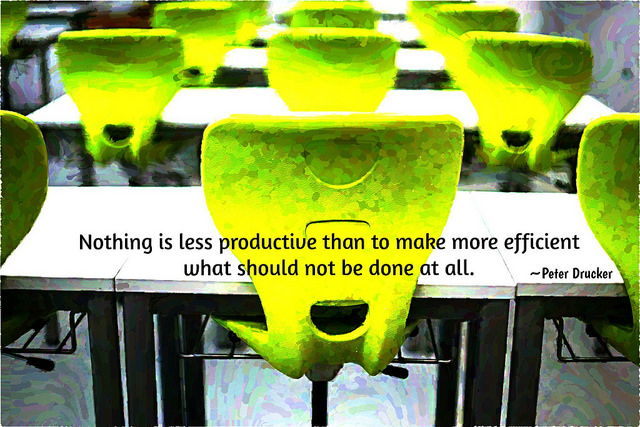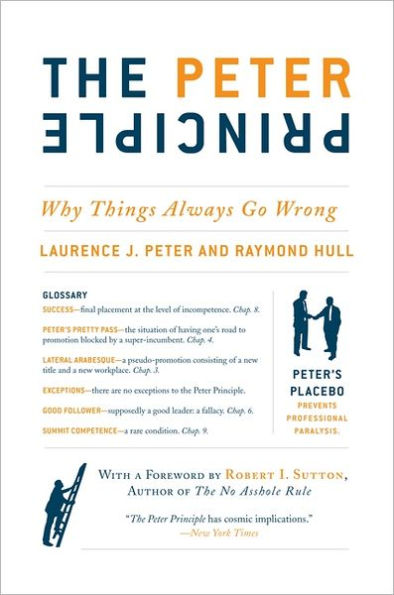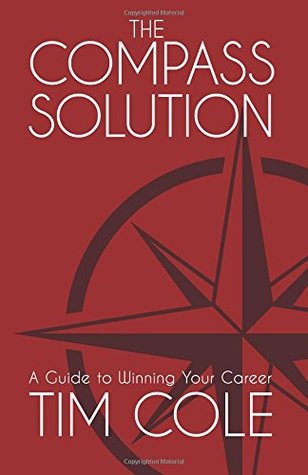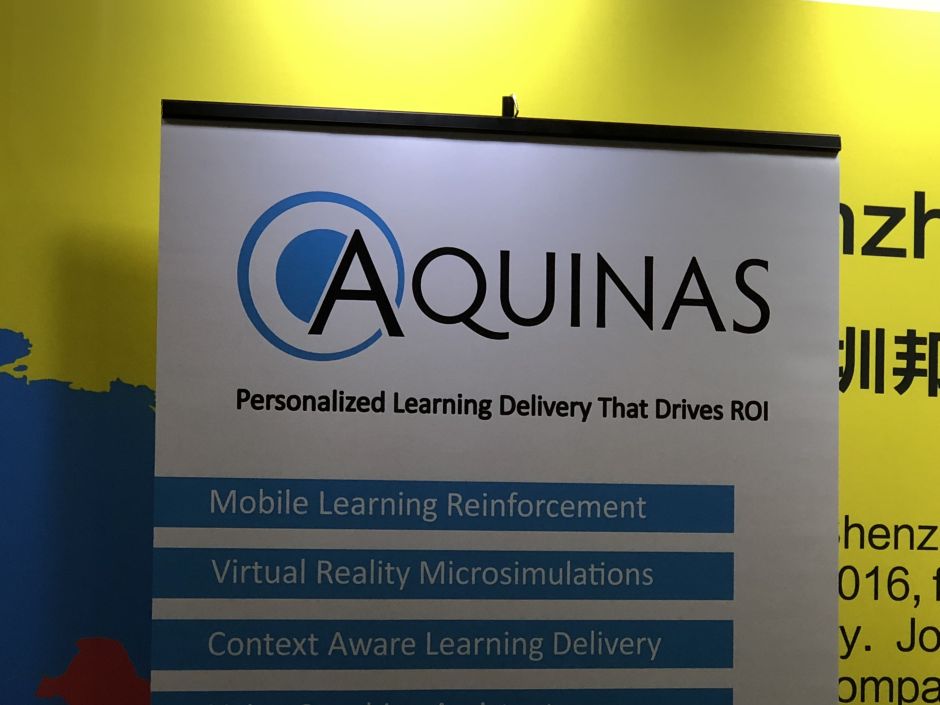|
|
|
Archive for January, 2018
Wednesday, January 31st, 2018

Are you suffering from high turnover? Are your people disengaged?
Do your stakeholders have high expectations of your next product/service?
Are you spending time and money competing for the same skills that your competitors — and everyone else — need, while trimming your current workforce through attrition or layoffs?
According to the Greek poet Archilochus, “We don’t rise to the level of our expectations; we fall to the level of our training.”
Companies are swift to blame a talent shortage when they aren’t meeting market expectations, but are slow to invest in their own people. And when hiring they only want people with X years of direct experience in [whatever], even when whatever just launched.
Moreover, hiring someone to do what they did previously practically guarantees one of two results (or both).
High turnover and/or a lack of engagement due to boredom.
Very few people enjoy doing the same thing year after year (do you?) and that is the big danger of hiring someone who has been there/done that, especially if you don’t provide a learning environment and new challenges.
However, providing them goes directly against the prevailing attitude that only the young can learn.
If that describes your own mindset, I suggest you read Bruno Michel’s description of his 35 year career (and counting), currently an IBM researcher, who radically reinvented himself six times resulting in a total of 160+ patents and 250+ peer reviewed publications.
You may not care about the publications, but the patents should make you sit up and rethink your ideas about how you value your people.
Michel’s belief is that people should change jobs every seven years.
That means you have a choice.
You can supply talent to other companies.
Or you can supply training and opportunities internally and keep your people happy and engaged.
Image credit: Patient Care Technician
Posted in Hiring, Motivation, Retention | No Comments »
Tuesday, January 30th, 2018

Is productivity important to you? Do you strive to do everything more efficiently? If so, you have a lot of company these days.
No matter where you turn you find hacks to improve your work skills, raise your kids, change your diet, lose weight, even improve your love life.
But in your drive for productivity, have you stopped and asked yourself if productivity is a good goal? In other words, are the benefits all they’re cracked up to be?
I’ve never believed they were.
It always seemed to me that constantly chasing a better way to do [whatever] in the name of efficiency meant expending great energy for a constantly shrinking return of higher productivity.
It’s not the improvement I have a problem with, it’s the relentlessness that turns me off. The feeling that if you aren’t constantly looking to improve you lose your value as a viable human being.
Last year, in a post about the idea that being busy was aspirational I said,
But no matter how long I live I doubt I’ll ever understand the fragility of egos that need to prove their value so badly they are willing to give up their lives to do it.
I didn’t then, and still don’t, have the historical knowledge or understanding to support what I feel, but Andrew Taggart, Ph.D., a “practical philosopher” who practices in Silicon Valley perfectly expressed my belief in Life hacks are part of a 200-year-old movement to destroy your humanity.
Taggart explains it this way.
These explanations can be reduced to two basic kinds. The first kind implies that much of life is burdened by mental suffering—feelings of being overwhelmed and stressed—that can, through our own concerted efforts, be alleviated or at least coped with by finding the right productivity hacks. The second suggests that life is a “middle class epic” whose finale would depict a form of satisfaction following from the completion of the most challenging tasks at work. Call it Inbox Zero Integrity.
Yet neither the desire to lessen our everyday mental suffering nor the pursuit for short-term satisfaction ultimately explains our deep cultural obsession with productivity. What drives it instead, I’d argue, is a 200-year-old movement toward making work the center of our lives.
I’ve been saying for decades that work should be part of life, not vice versa.
There are many ways to measure the ROI in your life, just as there are more important things for which to work.
They just don’t fit into the “productivity” or “efficiency” categories.
Read the article.
It may just change your life.
Image credit: Denise Krebs
Posted in Personal Growth | No Comments »
Monday, January 29th, 2018
Poking through 11+ years of posts I find information that’s as useful now as when it was written.
Golden Oldies is a collection of the most relevant and timeless posts during that time.
The Peter Principle was published in 1969, but the principle was just as true in 3000 BC as it is in 2018 and all the time in-between. It’s a lucky team that has a boss wise enough to keep the principle firmly in mind.
Read other Golden Oldies here.

Bob Sutton, author of The No Asshole Rule, recently wrote a 40th anniversary tribute called The Peter Principle Lives.
For those of you too young to remember, the Peter Principle states that “In a hierarchy, every employee tends to rise to his level of incompetence.”
“Dr. Peter argued, “When people do their jobs well, society can’t leave well enough alone. We ask for more and more until we ask too much. Then these individuals—promoted to positions in which they are doomed to fail—start using a bag of tricks to mask their incompetence. They distract us from their crummy work with giant desks, replace action with incomprehensible acronyms, blame others for failure, cheat to create the illusion of progress.”
Well put and oh, so, ironic.
The very supermen who performed such extraordinary feats of financial legerdemain were actually at the peak of their Peter Principle.
Sutton writes, “If Dr. Peter were alive today, he’d find that a new lust for superhuman accomplishments has helped create an almost unprecedented level of incompetence. The message has been this: Perform extraordinary feats, or consider yourself a loser.”
What do you ask of your people?
Do you ask for competency; for them to do the best they are capable of at that point in time? Do you give them the tools, training, support and opportunities to grow and develop?
Or do you promote your people before any of these happen, tossing them into the deep end of the pool to swim—or drown.
As a manager at any level you hold your people’s future in your hands. At any point you have the choice of helping them on their path to success, slowing them down or destroying them.
What do you choose?
Image credit: Barnes and Noble
Posted in Communication, Culture, Golden Oldies, Personal Growth | No Comments »
Friday, January 26th, 2018

A Friday series exploring Startups and the people who make them go. Read all If the Shoe Fits posts here.
I had a $15 K lesson in founder ego when I lived in San Francisco. That’s how much I lost when I invested in a startup run by a guy with a bad case of it.
The only thing to do when that happens is to move forward and forget it. Money is replaceable — your sanity isn’t.
I haven’t thought about it in years, but reading the abstract from Do Alpha Males Deliver Alpha? Testosterone and Hedge Funds reminded me of “Craig,” in spite of its focus on hedge funds. (The full paper is available at the link.)
Using facial width-to-height ratio (fWHR) as a proxy for pubertal testosterone, we show that high-testosterone hedge fund managers significantly underperform low-testosterone hedge fund managers after adjusting for risk. Moreover, high-testosterone managers are more likely to terminate their funds, disclose violations on their Form ADVs, and display greater operational risk. We trace the underperformance to high-testosterone managers’ greater preference for lottery-like stocks and reluctance to sell loser stocks. Our results are robust to adjustments for sample selection, marital status, sensation seeking, and manager age, and suggest that investors should eschew masculine hedge fund managers.
This makes one wonder if the lack of testosterone is an underlying factor in the outstanding success of women-led companies outperforming those led by men.
Hedge fund managers have a number of traits in common.
They are white, attended ‘good’ schools, graduated from elite colleges and are connected through a web of similarly privileged friends.
Sound familiar?
That description fits much of Silicon Valley, both founders and investors.
As does the abstract.
As do the egos.
Image credit: HikingArtist
Posted in Entrepreneurs, If the Shoe Fits | No Comments »
Thursday, January 25th, 2018

Do you feel lost in your career? Do you need guidance navigating the politics of work? Have you ever wanted to have a life coach that sat down with you and told you how the corporate world really works without any of the BS? Then this book is for you. I had the opportunity to read Tim Cole’s, “The Compass Solution” and was pleasantly surprised and educated.
Tim Cole is a successful executive within the healthcare industry who has succeeded at staying and enhancing his career within a climate that is full of mergers, layoffs, and changes in direction. He did not get there by accident but he also did not have all the answers laid out before him.
This book is his attempt to educate the current and future generations of careerists on how to avoid the pitfalls and embrace the challenges that come with climbing the ladder of success.
If you have ever read a devotional or daily affirmation then this book will seem familiar. It is laid out in two parts that are broken into seven sections. Within each section are several small chapters that touch on different topics.
This is the type of reading where you can focus on one section a morning during your daily routine or consume several at once. Tim does a great job of keeping the lessons grouped in a logical order and allows you to focus on a topic or just read front to back.
I was immediately struck by the first lesson that speaks to the responsibility you have to yourself and your company by setting a personal compass.
We have all had those jobs or bosses where we don’t want to put forth our best efforts. I know I have in the past and, as I look back, I regret those times in my career where I wasn’t my best at work. The only person it truly hurt was me. Tim presses home the point that our life and our work is our responsibility, no excuses.
It was an easy lesson to retain and applicable to any role. He continues to press on lessons of personal accountability through the first section and covers topics ranging from workplace burnout to how to take ownership over your career.
Tim then leads into the people section which has some entertainment factor to it. I especially like the topic of toadies. We have all seen them, the people who crowd around the boss hoping to impress them. In fact, we have probably all been a toadie at some point.
And that is the lesson. We have moments when we are not our best self, but we can recognize it and move forward.
In my role, I do not receive a lot of feedback from my leadership. Sometimes that is good, but sometimes it can feel like a vacuum.
This book has been a great addition to my daily routine. You can read a section in five minutes and dwell on the lesson throughout the day. Tim does not sugarcoat the topics, but he is also not a pessimist. It is obvious that his goal is to enable others to succeed by reflecting on his own shortfalls and achievements.
Who needs this book you may ask?
If I was a professor I would make this book mandatory for my students. If I was a manager I would make it mandatory for my team. I say this with all seriousness, because the lessons contained within would enable them to live their best selves, as well as enhance the bottom line.
The idea of ownership can create immediate value for the team and should be embraced.
So if you’re looking for a book that takes less than five minutes a day of commitment, has some humor and has a lesson to further your career then I suggest you pick this up.
Image credit: goodreads
Posted in Personal Growth, Reviews & Recommendations, Ryan's Journal | No Comments »
Wednesday, January 24th, 2018

AKA, commentary on the current world.
The more I see of the world, the more am I dissatisfied with it; and every day confirms my belief of the inconsistency of all human characters, and of the little dependence that can be placed on the appearance of merit or sense.
Source: Pride and Prejudice by Jane Austen
A tyrant must put on the appearance of uncommon devotion to religion. Subjects are less apprehensive of illegal treatment from a ruler whom they consider god-fearing and pious. On the other hand, they do less easily move against him, believing that he has the gods on his side.
Source: Aristotle
As democracy is perfected, the office of the President represents, more and more closely, the inner soul of the people. On some great and glorious day the plain folks of the land will reach their heart’s desire at last, and the White House will be adorned by a downright moron.
Source: H. L. Mencken
It’s the exact same story of too many people with too much money. That breeds arrogance, bad behavior, and jealousy, and society just loves to take it down.
Source: anonymous investor (the Other Tech Bubble, Wired 12/16/17)
Image credit: Omar Bariffi
Posted in Personal Growth | No Comments »
Tuesday, January 23rd, 2018

Back in 2009 I asked what it meant to be educated, considering the amazing basic ignorance displayed daily by Americans — often the same folks who disparaged education focused on liberal arts and the humanities.
Two years later Bill Gates agreed with them, while Steve Jobs disagreed.
In 2011, Microsoft cofounder Bill Gates told a panel of American governors that a liberal arts education would hold back college graduates in the modern economy.
A few days later, late Apple cofounder Steve Jobs declared that “it’s technology married with liberal arts, married with the humanities, that yields us the result that makes our heart sing.”
Their opposite attitudes partially account for Apple’s rise and Microsoft’s fall
In 2015 I wrote about the value of a liberal arts education.
It took seven years and a full change in management, for the “new” Microsoft to acknowledge this fact.
Microsoft president Brad Smith and EVP of AI and research Harry Shum wrote in their new book “The Future Computed” that “one of the most important conclusions” of Microsoft’s recent research into artificial intelligence is that lessons from liberal arts will be critical to unleashing the full potential of AI.
“At one level, AI will require that even more people specialize in digital skills and data science. But skilling-up for an AI-powered world involves more than science, technology, engineering, and math. As computers behave more like humans, the social sciences and humanities will become even more important. Languages, art, history, economics, ethics, philosophy, psychology and human development courses can teach critical, philosophical and ethics-based skills that will be instrumental in the development and management of AI solutions.”
Jobs wasn’t much of a coder. His real genius lay his ability to “see around corners,” know what his market wanted before it knew and then invent it. The fact is that he could see because he was grounded in liberal arts and the humanities.
This is the advantage non-tech founders often bring to the table.
Just as AI can beat humans at chess and Go, it will soon beat them at coding, I wonder just how many of the highly paid techies at Google, Facebook, etc., have the knowledge, philosophy and empathy to design algorithms fit for human consumption?
Image credit: Kyle Pearce
Posted in Culture, Ducks In A Row, Personal Growth | No Comments »
Monday, January 22nd, 2018
Poking through 11+ years of posts I find information that’s as useful now as when it was written.
Golden Oldies is a collection of the most relevant and timeless posts during that time.
There are two lessons in this post.
The first is that managing at any level requires you to be present, conscious, and focused on your people — not on your social media, where you’re having dinner, or the work being done on your home.
The second, is that if you are one of the truly bad ones, who messes with your people’s heads and inflicts intentional hurt on them, you will get yours, because eventually what goes around does come around — no matter how long it takes.
Read other Golden Oldies here.

“Is there a single devastating thing I may do unconsciously that messes my people up the most and, if so, what are the effects?”
I’ve heard variations of this question from many managers over the years.
The answer is yes, there sure is and if you aren’t doing it unconsciously then you’re one of the really bad guys and I can only hope that your turnover soars and your reputation spreads.
The action is inconsistency and the primary effect is fear. Secondary effects include intimidation and insecurity.
The end results in the business world are distrust, low productivity, less innovation, abysmal retention and, on a more personal level, poor reviews, fewer promotions and less opportunity.
It doesn’t matter that the inconsistency is unintentional, arbitrary or whimsical the results are the same.
It’s not knowing that really gets to people—even more than expected abuse.
Think about it. It’s one thing to have someone who constantly criticizes (unconstructively) or disparages you, because you can learn how to turn a deaf ear if, for some reason, you can’t get out of earshot.
But when a zinger comes out of nowhere in what’s normally constructive, or at least neutral, feedback you’re caught unaware, thrown off balance and it really gets to you.
Actually, the more infrequent it is the worse it is when it does happen. And after it happens a few times people find themselves waiting for it, wondering when it’ll happen again and almost holding their breath to see if this is the time the other shoe will drop.
That fear grows exponentially once it takes root and distrust typically increases at the same rate.
Can you think of a worse scenario for people to labor under?
But when it’s unconscious, how do you know?
If you actually focus on the person with whom you’re talking, instead of checking your phone or thinking about something else, you’ll see the zinger hit and you should be able to identify what it was. If you can’t, then ask! Acknowledge the reaction, state that you know it was something you said, but you’re not sure what. Be gentle if you expect the person to open up, but you stand a better chance if you ask immediately, while they’re still in shock.
But if you did it on purpose, to enjoy the show and then get them to open up so you can twist the knife, I sincerely hope that all your teeth and hair fall out and Zeus’ thunderbolt strikes you where you stand and chars you into tiny little bits.
Image credit: sxc.hu
Posted in Communication, Golden Oldies, Motivation, Retention | No Comments »
Friday, January 19th, 2018

A Friday series exploring Startups and the people who make them go. Read all If the Shoe Fits posts here.
Sometimes predictions are hilarious, especially those about where technology is taking us.
It’s not that they get the tech wrong, but they often don’t factor in the minor details — such as customers.
Media is aglow with stories of how autonomous vehicles (AVs) will literally change the world beyond anything you can imagine.
In a recent survey by AAA, for example, 78% of respondents said they were afraid to ride in an AV. In a poll by insurance giant AIG, 41% didn’t want to share the road with driverless cars. And, ironically, even as companies roll out more capable semi-AVs, the public is becoming less—not more—trusting of AVs, according to surveys over the past 2 years by the Massachusetts Institute of Technology (MIT) in Cambridge and marketing firm J.D. Power and Associates.
And then there’s security.
Every time a software hack is reported, especially from a vulnerability the company knew about two years before it happened, as with Chrysler’s Jeep, or a bank, a retailer, a whatever, people grow more and more aware of just how vulnerable a software-based world that runs on online updates actually is.
Speaking at the National Governors Association meeting last year, Tesla’s Elon Musk, said, “I think one of the biggest concerns for autonomous vehicles is somebody achieving a fleet-wide hack.”
The solution?
Mr Musk insists that a kill switch “that no amount of software can override” would “ensure that you gain control of the vehicle and cut the link to the servers”,
But what does control mean to an inert lump of metal that has no gas pedal, brakes, or steering wheel?
The car would just shut down wherever it was — maybe the middle of the freeway at rush hour or a lonely mountain road during a storm.
So customer trust and security are the main obstacles to the AV/tech-enabled world companies large and small are drooling over.
Given most companies historically cavalier attitude towards security and the general distrust of auto companies in particular, the result of multiple recalls over the years, changing people’s minds won’t be easy.
And for every step forward a major hack will mean at least three steps back.
Image credit: HikingArtist
Posted in If the Shoe Fits, Innovation | No Comments »
Wednesday, January 17th, 2018
Yesterday’s post about BS jargon seemed to be replayed in a pictorial of the atrocious, say-nothing advertising that graced the booths, many of which gave no hint as to the product.
Quartz reporter Mike Murphy summed it up nicely.
It’s like these companies spent hundreds of thousands of dollars to secure booths at CES, and then forgot to pay anyone to actually market whatever they were selling.
This is one of the most jargon laden.
 You can check out the rest here. You can check out the rest here.
Murphy was wrong on one point.
The companies probably spent as much, possibly more, on message creation.
And advertising companies don’t give refunds.
Image credit: Quartz
Posted in Communication, Personal Growth | No Comments »
|
 Subscribe to
Subscribe to
MAPping Company Success
About Miki 
Clarify your exec summary, website, etc.
Have a quick question or just want to chat? Feel free to write or call me at 360.335.8054
The 12 Ingredients of a Fillable Req
CheatSheet for InterviewERS
CheatSheet for InterviewEEs™
Give your mind a rest. Here are 4 quick ways to get rid of kinks, break a logjam or juice your creativity!
Creative mousing
Bubblewrap!
Animal innovation
Brain teaser
The latest disaster is here at home; donate to the East Coast recovery efforts now!
Text REDCROSS to 90999 to make a $10 donation or call 00.733.2767. $10 really really does make a difference and you'll never miss it.
And always donate what you can whenever you can
The following accept cash and in-kind donations: Doctors Without Borders, UNICEF, Red Cross, World Food Program, Save the Children
*/
?>About Miki
About KG
Clarify your exec summary, website, marketing collateral, etc.
Have a question or just want to chat @ no cost? Feel free to write
Download useful assistance now.
Entrepreneurs face difficulties that are hard for most people to imagine, let alone understand. You can find anonymous help and connections that do understand at 7 cups of tea.
Crises never end.
$10 really does make a difference and you’ll never miss it,
while $10 a month has exponential power.
Always donate what you can whenever you can.
The following accept cash and in-kind donations:
|















